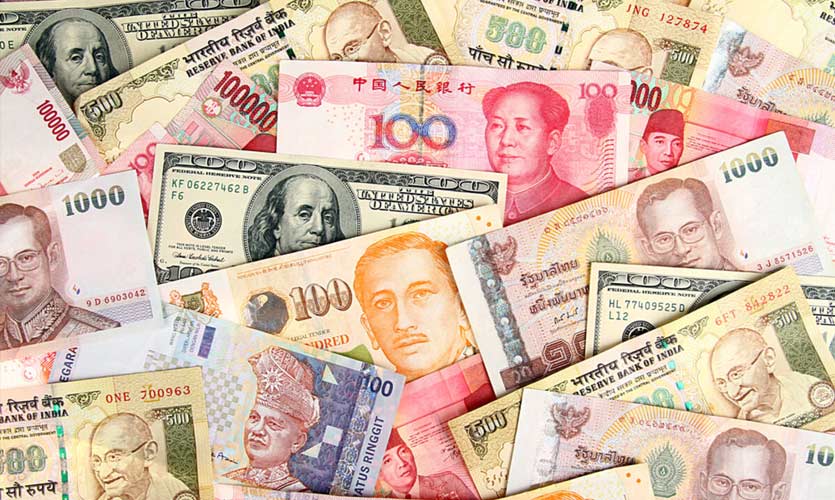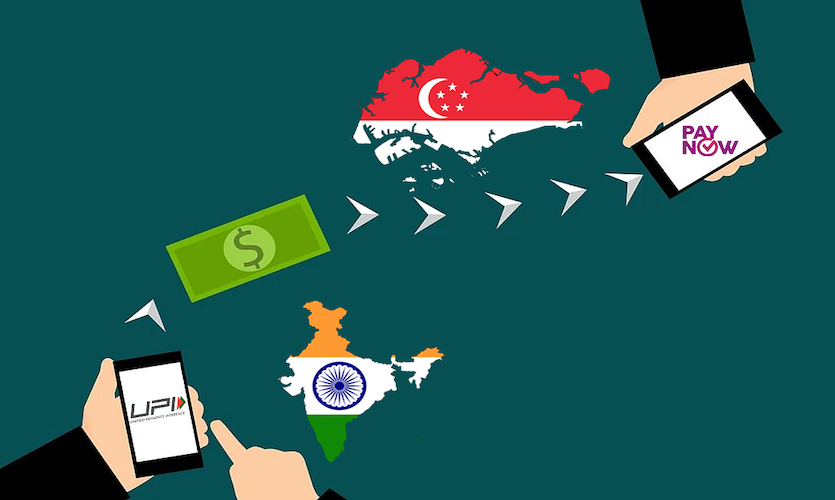As the Russian invasion of Ukraine continues, India’s trading relationship with Russia has not witnessed any severe impact, however, there exists the looming prospect that it could be impacted if tougher sanctions are imposed on Russia and its administrators. The events of today will have both national and international long term and immediate implications. Particularly, as the world is starting to get used to the “new normal” due to the ongoing pandemic, the Russia-Ukraine conflict will have an added impact with the rise of politically and economically interlinked issues.
The pandemic saw an impact on the supply chain, which created a resource-constrained environment. The recent sanctions will impact global trade and aggravate these existing supply bottlenecks. As the West pressures other nations to stop trading with Russia, specifically the import of energy from the country, there is a rising threat of sanctions on those nations and companies that refuse to comply. China, one of the biggest trading countries, faces the threat of sanctions due to its support for Russia, which could heavily aggravate trade and supply chain issues.
As Ukraine is a major agriculture exporter, the conflict will create further disruptions, leading to an increase in food prices. Commodity prices have already been rising. This will continue as some of the most critical supplies come from Russia and China. All these issues contribute to rising inflation, impact on purchasing power, weaken demand and eventually lead to a slowdown in global growth. As India tries to maintain diplomacy with Russia while pushing the Kremlin to seek peace with Ukraine, the future of Indian trade and markets remains uncertain, both in the short and long run.
Sanctions, Inflation Rise, Crude Oil And Gold Hike
India and Russia’s economic relationship may not be at its peak, however, there exists a significant flow of foreign investments between the two nations, particularly the petroleum sector. Most of these have been old investments. Experts believe that the threat of Western sanctions may not see an immediate impact on old investments since the sanctions have mostly targeted investments that include no new investments, trade, no new Russian bonds in the Western stock markets, and so on.
Global markets will likely remain volatile depending on the geopolitical developments, however, experts have also expressed optimism that India is not expected to witness direct impacts and advised investors to not sell in panic. However, the threat of inflation does exist. Last week witnessed Brent crude increasing past the $100 per barrel mark for the first time in eight years due to supply issues. As Russia is the second-largest oil producer in the world, rising oil prices will speed up the already rising inflation.
While India imports more than 80 percent of its oil requirement, the share of oil imports in its total imports is around 25 percent. In 2021, India imported 43,400 barrels per day (BPD) of oil from Russia, which is only 1 percent of its overall imports. State-owned natural gas corporation GAIL (India) Ltd, in 2018, inked a 20-year deal with Russia’s Gazprom to buy 2.5 million tonnes of liquefied natural gas (LNG) a year.
According to a report by the Bank of Baroda, a 10 percent increase in crude oil is likely to increase the Wholesale Price Index (WPI) in India by nearly 0.9 percent. Rising oil prices widen the current account deficit, which is the difference between the values of goods and services imported and exported. S&P Global Platts Analytics had earlier reported that a 10 percent rise in oil prices can increase to nearly $15 billion of the country’s current account deficit, equivalent to 0.4 percent of India’s GDP, highlighting a negative impact on the Indian economy. The recent assembly elections have seen a hold on domestic fuel prices across the five states. However, the global surge in crude prices would increase the pressure on state-owned oil retailers.
For consumers, higher crude oil prices mean that they will have to pay more for fuel. In India, prices of petrol and diesel hit record highs across the country. However, prices eased after the government cut excise on petrol and diesel by Rs 5 and Rs 10 per litre, respectively. Several states also reduced the Value Added Tax on fuel in November 2021. The rise in oil prices is also going to impact jet fuel costs that will make transportation costs higher. Subsidy bills on LPG and kerosene will also rise with the spike in crude oil prices. Some experts have argued that India’s economic fundamentals remain strong, and that the conflict in Europe will not have a significant impact on the economy. With the third wave of COVID restrictions close to its end and in the process of being withdrawn, a pickup is expected in consumption and domestic growth, quickening the pace of recovery.
RBI governor Shaktikanta Das said, “Monetary policy should remain attuned to the evolving domestic inflation and growth dynamics.” The RBI Monetary Policy Committee (MPC) meeting has indicated that policymakers do not plan on immediately reacting to geopolitical tensions, and will continue to support economic growth. The February MPC meeting ended in status quo on key policy rates and an accommodative stance. “Inflation pressures continue to emanate largely from supply-side factors. Economic recovery from the pandemic remains uneven, and continued support remains crucial. So, it is wise to remain agile and respond in a gradual, calibrated, and well-telegraphed manner to the emerging challenges,” said Das. However, experts have said that the RBI status quo on rates could create an atmosphere of uncertainty and confusion. With inflation not appearing to be in a haste to subside, India could face high petrol and diesel prices post the election results on March 10.
In times of uncertainty and inflation, as equities have been falling, gold has risen sharply and has become an asset class of choice for investors. A report by Motilal Oswal Financial Services said, “If the current situation further escalates, investors will cling on to safe-haven asset or sit on cash, i.e. dollar. Along with geopolitical tensions, rising inflationary concerns has also been supporting precious metal prices on lower levels, hence supporting our view of buying on dips.”
Bilateral Trade Impacts
According to the Nomura report, the disruptions in supply chains will adversely affect Asian countries the most as the highest importers – India, Thailand and the Philippines – are likely to be the biggest losers of the ongoing crisis. Although Ukraine and Russia are not major trading partners of India, some sectors and commodities could feel the impact. In 2021, the two-way trade between India and Ukraine stood at $3.1 billion. Exports from India stood at $510 million. According to Business Standard, pharma products made up 32 percent, while other exports included iron and steel, agro-chemicals, telecom instruments, and coffee. Imports from Ukraine stood at $2.6 billion in 2021, of which $1.85 billion comprised vegetable oils, mainly sunflower oil. In contrast, bilateral trade between India and Russia amounted to $11.9 billion. India exported goods worth $3.3 billion, with pharmaceutical products being the largest export commodity at $542 million. Apart from this, India exported electronics, iron and steel, tea, and auto components to Russia. In 2021, imports from Russia stood at $8.6 billion, which included crude oil, petroleum products, gold, precious stones, coal, fertilisers and precious metals.
Together, Ukraine and Russia account for 90 percent of India’s sunflower oil. Industry watchers expect the Indian edible oil industry to be hit by the geopolitical conflict. “A slight delay is fine but if it (supply) stops then there will be a shortage and prices can go haywire,” the Deccan Herald quoted Sandeep Bajoria, CEO of consultancy at the oils and oilseeds firm Sunvin Group. Bajoria said that out of India’s total 25 lakh tonne sunflower oil import, Ukraine supplies 17 lakh and Russia sends two lakh tonnes, taking India’s trade value with the two countries to about $3 billion.
According to PTI, while for the rest of the world Russia is the largest exporter of wheat, its conflict with Ukraine will have a negligible impact on India’s foreign trade. At present, India’s central pool of wheat is 24.2 million tonnes, which is twice more than the buffer and strategic needs. This could mean that the crisis could boost exports from India to the global markets. Similarly, other areas of benefits include being an alternative source for commodities like steel and aluminium, where Indian businesses can benefit since the commodities supply disruptions to the EU would generate greater demand for steel and other engineering goods, of which India is an alternate supplier.
Read more: What Will Be The Impact Of The Russia-Ukraine Tension On Crude Oil and Global Trade?
Impact On Budding Sectors
With the growing demand in electric vehicles and India set to leverage its electric vehicles market, the growing price of Nickel to $25,000 per ton, which is a first since 2011 could have a lasting impact. Copper, which is in demand for electric vehicles, wind turbines and other green energy initiatives, has continued to rise in value, with Goldman Sachs analysts calling it “the new oil”. Analysts predict prices to average around $11,000 per metric ton over the next 12 months. This means higher input costs for many companies at the forefront of the renewable business, which has so far been insulated from any big escalation in costs. Fast-Moving Consumer Goods (FMCG) have also seen a decrease in demands from rural households, highlighting an increase in inflation that will only continue with the ongoing war.
The year 2020-21 saw Indian IPOs flourish, with valuations growing higher, and a rush for subscriptions. However, post the Paytm listing, a bad run for this giant could mean the IPO circus has come to end. According to the Indian Express, at least one in three IPOs this financial year is currently trading below its issue offer price. There is similar damage across the mid and small-cap fields, where stocks have already seen savage cuts of over 20 percent this year. The war will only deteriorate the investment climate due to growing uncertainty, and capital flows into the country will decline, leading to a further decline in the stock markets. The P/E ratio was already at high levels, and such a big shock is bound to hit stock prices.
Conclusion
Russia is also the biggest arms supplier to India, making up almost half of the total arms imports. As India depends on imports for critical defence equipment, there will be a slowdown in procuring defence equipment since there is bound to be a delay in deliveries, given their requirements. This means India’s defence is at stake and could weaken its stand against China and Pakistan. Experts believe that China could take advantage of this development and push India harder.
The Indian government finds itself worrying about the welfare and evacuation of 20,000-odd Indian students along with other citizens, while also facing implications on our economy. History has shown us that war has immediate consequences for global trade, capital flows, financial markets and access to technology. In an increasingly globalised world, sanctions being imposed on Russia by the rich Western countries will not stop the war, but the real impact will be seen over time, on the political and economic relations between the two sides. For India, relations with both the US and Russia are likely to become tricky since it is forced to continue staying neutral while both countries continue to expect its support.









